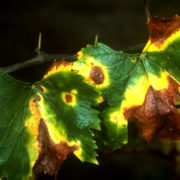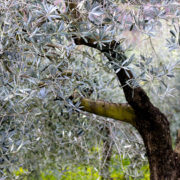Isolation and pathogenicity of Xylella fastidiosa associated to the olive quick decline syndrome in southern Italy
Authors
M. Saponari (1), D. Boscia (1), G. Altamura (1), G. Loconsole (2), S. Zicca (1), G. D’Attoma (1,2), M. Morelli (1), F. Palmisano (3), A. Saponari (3), D. Tavano (1), V. N. Savino (2), C. Dongiovanni (3) & G. P. Martelli (1)
Affiliations
(1) Consiglio Nazionale delle Ricerche-Istituto per la Protezione Sostenibile delle Piante (CNR-IPSP), Sede Secondaria di Bari, 70126, Bari, Italy. (2) Università degli Studi di Bari Aldo Moro, Dipartimento di Scienze della Pianta, del Suolo e degli Alimenti (DiSSPA), 70126, Bari, Italy. (3) Centro di Ricerca, Formazione e Sperimentazione in Agricoltura (CRSFA) “Basile Caramia”, 70010, Locorotondo (Bari), Italy.
Abstract
In autumn 2013, the presence of Xylella fastidiosa, a xylem-limited Gram-negative bacterium, was detected in olive stands of an area of the Ionian coast of the Salento peninsula (Apulia, southern Italy), that were severely affected by a disease denoted olive quick decline syndrome (OQDS). Studies were carried out for determining the involvement of this bacterium in the genesis of OQDS and of the leaf scorching shown by a number of naturally infected plants other than olive. Isolation in axenic culture was attempted and assays were carried out for determining its pathogenicity to olive, oleander and myrtle-leaf milkwort. The bacterium was readily detected by quantitative polymerase chain reaction (qPCR) in all diseased olive trees sampled in different and geographically separated infection foci, and culturing of 51 isolates, each from a distinct OQDS focus, was accomplished. Needle-inoculation experiments under different environmental conditions proved that the Salentinian isolate De Donno belonging to the subspecies pauca is able to multiply and systemically invade artificially inoculated hosts, reproducing symptoms observed in the field. Bacterial colonization occurred in prick-inoculated olives of all tested cultivars. However, the severity of and timing of symptoms appearance differed with the cultivar, confirming their differential reaction.
This work was supported by the European Food Safety Authority (EFSA) in the framework of the “Pilot project on Xylella fastidiosa to reduce risk assessment uncertainties” (NP.EFSA.ALPHA.2014.07) and by the European Union’s Horizon 2020 Research and Innovation Programme, under grant agreement No. 635646, POnTE (Pest Organisms Threatening Europe).
Published on December 18, 2017 by NATURE SCIENTIFIC REPORTS









